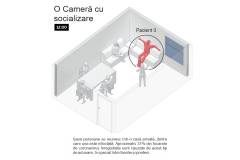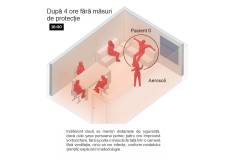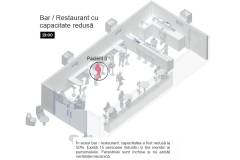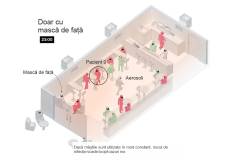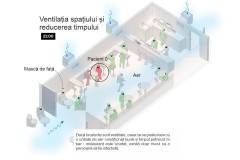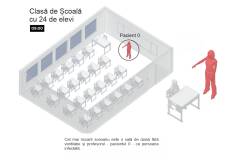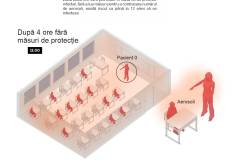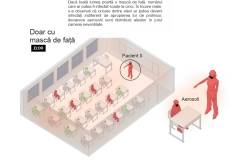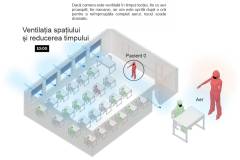How Coronavirus Spreads in a Room, Bar or Restaurant and a School Class
The risk of contagion is greatest in indoor spaces, but can be reduced by applying all available measures to combat aerosol infection.
Here is an overview of the likelihood of infection in three daily scenarios, based on the safety measures used and the duration of exposure.
Coronavirus is spread through the air, especially indoors. Although not as infectious as measles, scientists now openly acknowledge the role played by aerosol transmission - small contagious particles expired by an infected person that remain suspended in the air of an indoor environment.
How does the transmission work? And, more importantly, how can we stop it?
Here are 3 simple scenarios in our lives:
A room
Six people gather in a private house, one of which is infected. About 31% of recorded coronavirus outbreaks are caused by this type of gathering, especially between family and friends.
Regardless of whether safety distances are maintained, if the six people spend four hours together talking loudly, without wearing a face mask in an unventilated room, five will become infected, according to the scientific model explained in the methodology.
If face masks are worn, four people are at risk of infection. Masks alone will not prevent infection if exposure is prolonged.
The risk of infection falls below one when the group uses face masks, shortens the length of the assembly by half and ventilates the space used.
A Bar or Restaurant
In this bar / restaurant, capacity has been reduced to 50%. There are 15 people inside and three staff members. The windows are closed and there is no mechanical ventilation.
In the worst case, if no action is taken, 14 of the customers will be infected after four hours.
If the masks are used constantly, the risk of infection decreases to eight new cases.
If the premises are ventilated, which can be done with a good air conditioning unit and the time spent in the bar / restaurant is shortened, there is only a risk that a person will be infected.
A school class
The most risky scenario is a classroom without ventilation and the teacher - patient 0 - as the infected person.
If four hours are spent in class with an infected teacher without taking steps to counteract the number of aerosols, there is a risk that up to 12 students will become infected.
If everyone wears a face mask, the number that could be infected drops to five. In real outbreaks, it has been observed that any of the students could become infected regardless of their proximity to the teacher, because the aerosols are randomly distributed around the unventilated room.
If the room is ventilated during the lesson, either with fresh or mechanical air, and the hour is turned off after an hour to completely refresh the air, the risk decreases dramatically.













